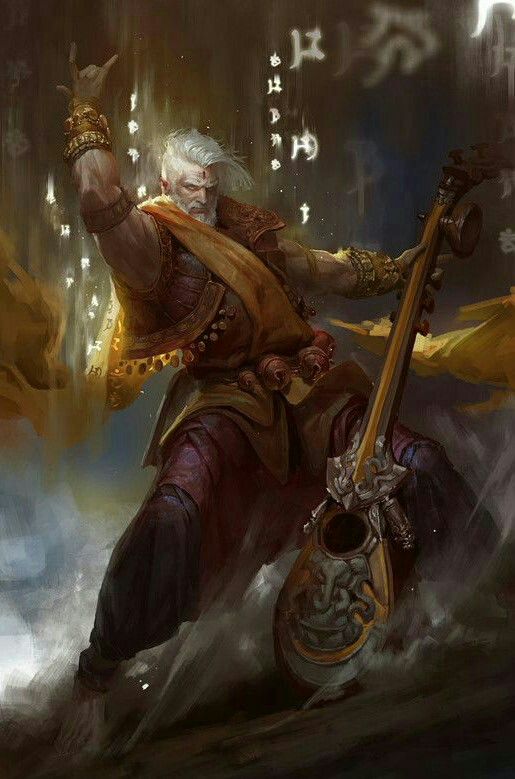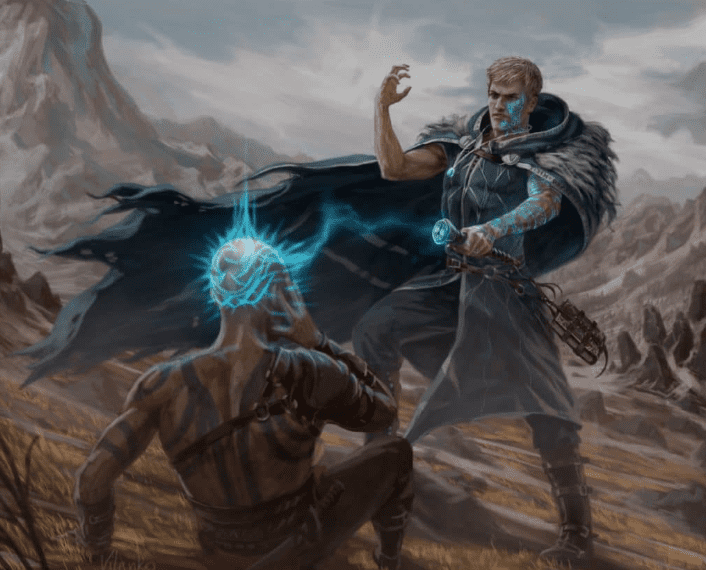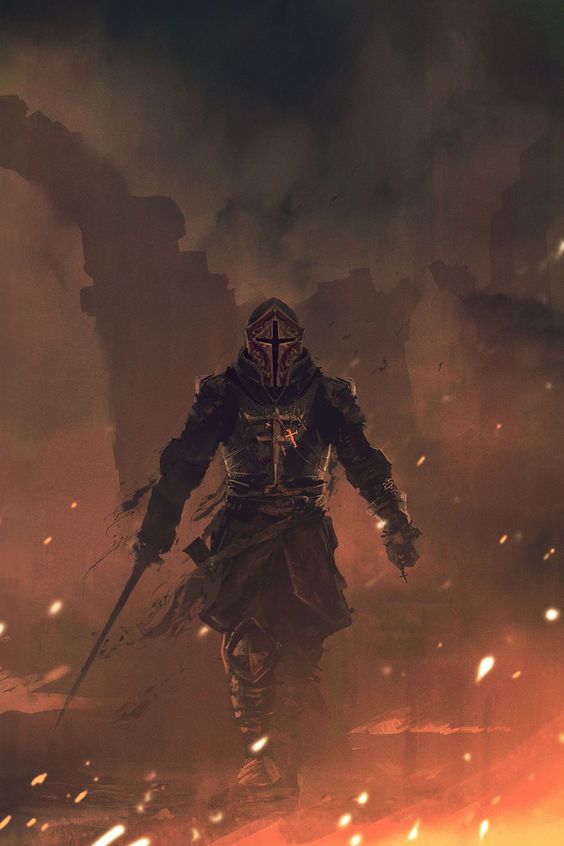D&D 5e: College of Creation Bard Guide

D&D 5e: College of Creation Bard Guide
Role in the Party
Bards are the quintessential jack-of-all-trades class, and each of their College subclasses adds to their wide range of innate skills and abilities by focusing hard on one particular set of skills.
For the College of Creation, that’s … well, creation. Not only will your allies find that the Inspiration you hand out is even more effective, but Creation Bards can also create items out of nowhere, and turn anything at hand into a summoned companion. All the while still casting fully powered spells.
Epic
Good
Meh
Bad
The College of Creation Bard subclass is found in Tasha’s Cauldron of Everything. Click here to pick up your own copy of Tasha’s Cauldron of Everything!
College of Creation Features
Note of Potential: Available at 3, as soon as you gain the subclass, Note of Potential boosts your Bardic Inspiration, costing no more resources and adding one of three benefits, depending on what sort of roll the inspiration dice are spent on.
-Ability Checks: Roll the inspiration dice twice, and choose which one to use. Crucial to ensuring key checks are passed.
-Attack Rolls: Adds extra damage after attacking a target. The damage is low, on a limited resource, and requires a failed save. It’s just too many steps for the damage on offer.
-Saving Throws: Add the inspiration dice and your CHA modifier as temp HP to the character making the save. More HP is always good, especially as a free resource.
Performance of Creation: Create any non-magical item you can think of, held back by a few small restrictions. It can’t cost more than 20x your Bard level in gold (60 gold at level 3 is a lot of items.) It can’t be Large until 6, or Huge until 14th, and lasts your proficiency bonus hours.
This ability is so incredibly open-ended. Create a weapon, a crowbar, a rope, a boat! You get one use for free and can do it again by spending a spell slot of 2nd or higher.
Animating Performance: At level 6, the College of Creation can target any Large or smaller item, and turn it into a faithful summoned companion for an hour.
The stat block is comparable to other summons at this level, with a decent pool of scaling HP, a fly speed so it can chase down any enemy, an attack that deals Force damage, and a rider that increases or decreases speed within its range.
It takes a bonus action to command, but you can command it at the same time you use Bardic Inspiration, so nothing is stopping this from attacking every single turn. You can only have one Animated Item, but you can use the ability again if this runs out of time or HP by spending a spell slot of at least 3rd level.
This ability is fantastic. It’s flavorful and fun, and the summon is powerful enough to be relevant while scaling appropriately even into the higher levels.
Creative Crescendo: At level 14 the Creation Bard can have a number of Animated Objects equivalent to its CHA bonus. (So, five, then.) Only one can be large, the others have to be small or smaller, but this makes no difference to their stats, only offering fringe utility benefits. (I animated the door! It hits you then holds shut!)
This means you can easily carry a bag of swords around with you, and turn five of them into your flying, dancing personal army for an hour every time you investigate anywhere that might be hostile. This is another incredibly powerful ability, that comes at a low enough level that you might use it for a good chunk of an adventuring career.
Strengths
The Creation Bard leans hard into two things. The first is doubling down on the natural buffing abilities of the Bard, boosting Inspiration even further, great on an ability that might be used ten times a day or more.
The second thing it does is shift the Bard into a pet class, giving it a powerful, summonable pet that’s as strong, if not stronger, than Animal Companions, Undead summons, or anything that the Druid can pull out of their spell list.
And it does this without consuming any of the Bard’s existing resources unless the day is long enough that you somehow need to use these abilities over and over again.
When this is backed up by the bard’s traditional strengths of in-combat control spells, and out-of-combat utility, backed up by ribbon abilities like being able to create any item the party lacks with Performance of Creation, the result is a class that is powerful and flexible no matter the situation.
Weaknesses
Toughness. Bards are a class that traditionally lacks defenses. Light armor proficiency and a D8 hit die don’t go far, especially when enemies are swarming. The Bard spell list also lacks in some of the defensive options other classes have access to, so your best defenses are your party first, then trying not to get hit.
The Bardic spells are heavy in buffs and debuffs, but also seriously lack high damage spells. You can compensate for this with Magical Secret choices, but it’s something you have to invest in. However, the summonable pets the College of Creation has at its fingertips help to mitigate this, freeing your character to shift the state of the battlefield with their spells while the giant animated goose statue you found in the dungeon meeting hall two rooms ago goes on a rampage.
Best Race Options
Fairy: Your choice of stats and some extra spells per day are nice, but you’re here for the ability to fly, that’s limited only by medium or heavy armor which you don’t have proficiency in any way.
Protector Aasimar: Bonuses to your main casting stat, darkvision, resistance, and free healing are a good package. But the reason this is purple is the once a day ability to fly for one minute, as well as adding significant damage to your spellcasting every single turn. Find a way to get Firebolt or Eldritch Blast and suddenly your Bard is shooting dragons out of the sky.
Dispater Tiefling: Any Tiefling is good because they all offer bonuses to your main stat and bonus spellcasting. But Dispater’s children are particularly good, because of the secondary bonus to DEX, and a whole bunch of spells that help with skulduggery and misdirection, which are things any Bard loves.
Choosing the Right Skills
Performance. You’re a Bard. It’s a law that you need to take this skill.
When creating a character, Bards have an open choice with skills, as well as in-class access to the Expertise ability which doubles proficiency for two of them, making Bards better at skill use than any class except Rogues.
Natural choices are the social skills like Persuasion and Deception, but if your party lacks a particular skill option, especially ones that you suspect are going to be vital in your campaign, you can take them without a second thought, and you have enough slots that one or two sub-par choices won’t hurt your build in any way.
Fitting Feats
Magic Initiate: Creation Bards don’t have many options for dealing consistent damage, so taking Magic Initiate gives you access to the Warlock spell list and the best damage cantrip in the game; Eldritch Blast, which already scales off of your main casting stat.
You also gain a once per day cast of another Warlock spell. Our recommendation is Hex, which adds even more damage against a critical enemy.
Inspiring Leader: Add to the support aspects of the subclass by throwing boatloads of CHA scaling temp HP at your party every morning, as well as every time you can short rest. The RP potential is also great, however, you decide to flavor this ability.
Metamagic Adept: The Bardic spell list is packed with single target debuffs that can be Twinned, big AOEs that benefit from Careful Spell, and you can even take useful out-of-combat meta magics like Subtle Spell to mess with people’s minds without them ever knowing.
Optimal Backgrounds
Pirate: Perception is king, Athletics less so, though you can always use Expertise and Inspiration to catch up. You also gain Navigator’s Tools and Water Vehicles proficiency, which is hilarious at level 6 when you can pull a full-sized canoe out of your pocket.
Guild Artisan: Persuasion is good, Insight less so, but one type of Artisan’s Tools is nice, and so is a language. Plus it fits the archetype and theme perfectly.
Criminal: Stealth and Deception are great skill choices, and Thieves Tools turns you into a lock-picking machine. Especially considering you can create any tools you’re lacking with your subclass abilities. You also learn to play a Gaming Set, which is nice, I guess.
Multiclassing Options
Hexblade Warlock: If your College of Creation wants to swing their own sword, there is no better option than a single level dip into Hexblade.
Suddenly, you can swing a one-handed weapon as well as the fighter, plus have access to a bunch of spells that aren’t traditionally available to the Bard.
More levels offer invocations and other benefits but will eat into your spell level progression. Take no more than 3 levels.
Clockwork Soul Sorcerer: Splashing Sorcerer offers a spell list that’s heavy on the blasts that a Bard can lack, and doesn’t put your total spell level progression behind at all. However, you won’t get access to higher levels spells and it puts your Bardic abilities behind as well, so it’s not recommended to dip Sorcerer until you hit at least level 6 for Animating Performance.
The Clockwork Soul in particular gains the ability to switch off Advantage and Disadvantage for allies in a pretty big range, another buff to add to the giant list you already have. Uses scale with your Proficiency bonus, and it’s a Reaction, so doesn’t interfere with your other skills.
If this sounds good, a 1 level dip is solid, but we wouldn’t go past 3 levels for Metamagic.
Rogue: Become the ultimate out-of-combat character by multiclassing into Rogue. Just one level gives you even more skills to add to your pile, and Expertise in 4 of them. Sneak attack doesn’t really synergize with anything that you want to do, but Cunning Action at level 2 is a reasonable use of your bonus action.
Still, unless you have a plan in mind, 1 level of Rogue gives you everything you came here for. Alternatively, once you hit 6 Bard, you could go deep into Arcane Trickster or Swashbuckler, and fight alongside your own animated weapons.
Would I recommend playing a College of Creation Bard?
The Bard has no bad subclasses, but the College of Creation stands out from the rest by doing something absolutely unique.
The Animating Performance ability is subclass defining and allows you to meaningfully contribute to fights while still casting all of your spells. It’s incredibly powerful, and it’s honestly the main reason to lean into this class.
But you’re also still a Bard, with incredible flexibility outside of combat and the ability to specialize in almost anything you might want to. And not only are Creation bards strong and useful, they’re also a blast to play!
Long story short, any party, sitting at any table, would be happy to welcome alumni from the College of Creation.









